Most turisti visit Italy to enjoy the food and wine, climb the tower in Pisa and view the masterpieces created by (among others) Michelangelo and Donatello. And while we certainly found those pursuits enjoyable, the trip that really piqued our interest was the sojourn to Pontedera, home of Piaggio and Company S.p.A.
The Vespa Scooter

1953 125 U w/sidecar
While we like to think of LotPro.com as primarily an automotive website, that doesn’t preclude us from discussing all things in the transportation sector here and if you’re in Italy, that certainly includes scooters.
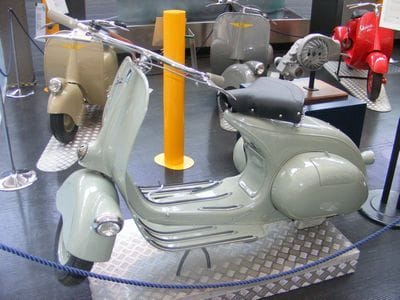
1945 MP6 Prototype
In the bigger cities, especially, these small two-wheel conveyances are driven with almost suicidal recklessness through the streets – weaving in and out of the maze of urban traffic, in front of, behind and even between larger vehicles. There are, literally, thousands of them in Florence and they can trace their heritage to the end of World War II, when Italy, and the Italian economy, was in disarray. It's at this time that the history of Vespa really began.
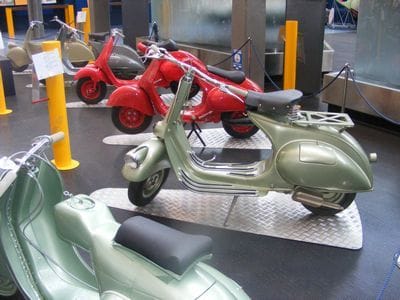
1947 Vespa 98/4
The History of Piaggio
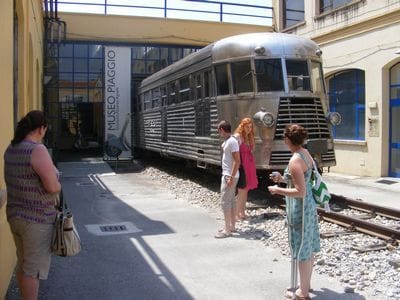
Museum Entrance with Railway Car
Founded before the turn of the century (the twentieth, that is), Piaggio was part of the Italian transportation industry. This meant producing locomotives as well as railway cars. With the advent of World War One, the company also began making airplanes, as well. The company continued to produce fighter aircraft during World War II. By the end of the war, the plant had been totally demolished from Allied bombing raids.
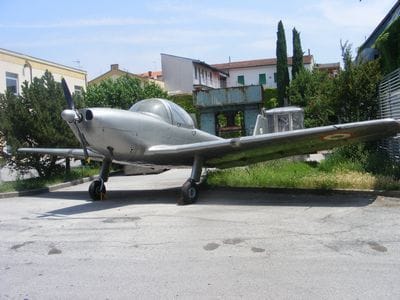
1951 P148 Airplane
With the Italian economy in a shambles, Enrico Piaggio, the son of founder Rinaldo Piaggio, turned his attention to the rebuilding of the plant and the production of motor scooters – a more affordable transportation alternative to the automobile.
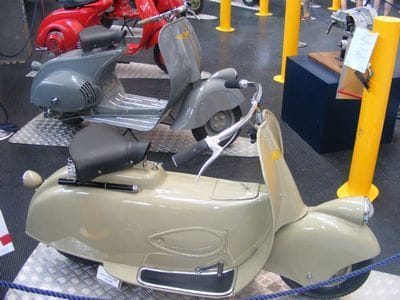
1945 Prototype Moto Piaggio 5 "Paperino"
The results of this engineering effort led to the development of the original Vespa scooter – the MP5 – and known as “Paperino” or “Donald Duck” because of its somewhat odd shape. Enrico was to give the Vespa its official name when he made the comment that the noise the scooter made reminded him of a wasp ("Vespa" is Italian for wasp).
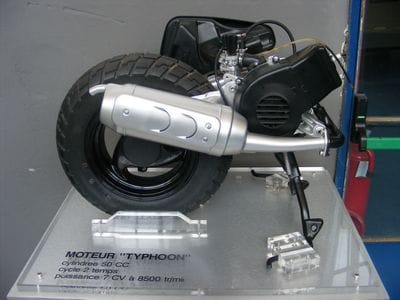
Modern version of 50cc Engine
In any case, the first model had a two-stroke 98 cc engine. To aid in engine cooling (the engine was air cooled) fins were attached to the flywheel to force air over the cylinder’s cooling fins. Design innovations included a fuel cap located under the seat to eliminate the need for a lock on the fuel cap as well as a front shield to protect the driver from dirt and road debris.

Body with Front Shield
The Museum
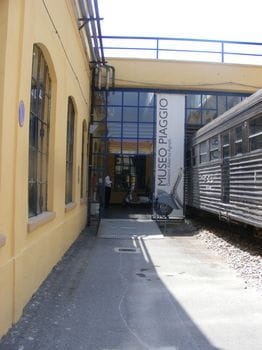
Museum Entrance
Museo Piaggio is located in a converted portion of the Piaggio factory and, as such, is surrounded by buildings which house the corporate offices, design facilities and assembly plants of Piaggio and Company S.p.A. The entrance can be accessed via the narrow streets that run through the maze of buildings by following signs that direct you to the museum.
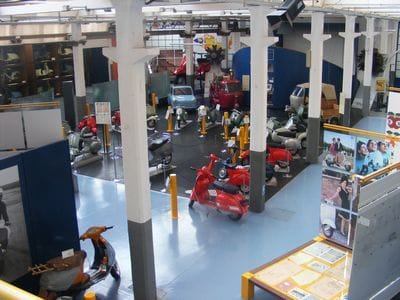
Museum Main Floor
Once there, you walk through an arched entrance, through a courtyard adorned with a 1950's-era primary trainer plane to the modern-looking entrance. The museum, dedicated in 2000, is housed in what was once the company tool shop. Among the hundred or so Vespas on display is the Vespa Dali, signed by the famous Spanish artist, as well as individual models that span the entire history of the company.
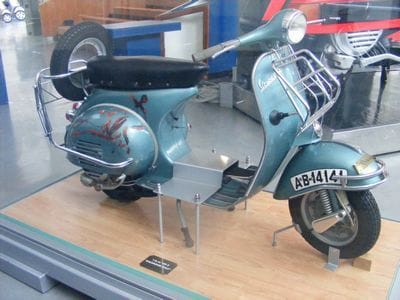
Vespa "Salvador Dali"
More Information

Record-Setting 1951 Vespa Silurio - 106.3 mph
The museum is open Wednesday through Saturday from 10 a.m. until 6 p.m (on the day we visited it was open during Siesta). Admission is free (one of the great bargains considering the current Dollar to Euro exchange debacle). While on-street parking is very limited, there is a parking facility located next to the museum.
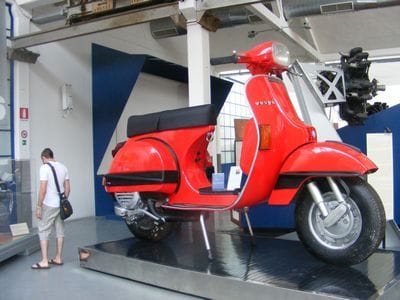
World's Largest Vespa
Email: [email protected]
Ph. +39 0587 27.17.1
Fax: +39 0587 29.00.57
As with many other sites in Italy, operating hours for exhibitions and other events are subject to change and it is suggested that you call or email the Museum, before you visit, for specific information.
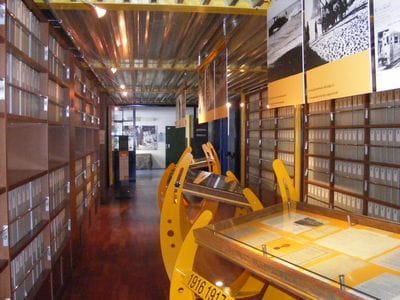
Piaggio Archives












